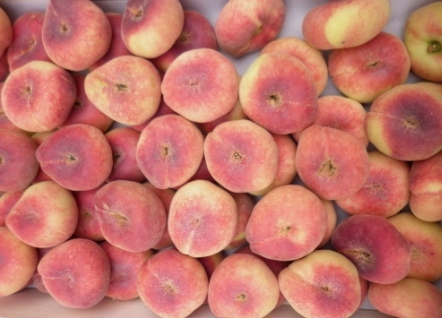Sparkling Burgundy
Early June, it’s springtime in France and we’re on the fast train to Dijon, capital of Burgundy. After Dijon, we’ll head towards Avignon, Aix en Provence and Marseille.
No rental cars or rural retreats this trip. It’s all train and bus from Paris to Marseille, staying at pre-booked, self-catering apartments in the heart of each town.
Les Halles shopping
On our first look around Dijon we take in the large covered Les Halles Market, built by Gustav Eiffel – he of Tower fame.
Les Halles features a profusion of fresh produce. Multitudinous piles of drool-worthy AOC cheese. Thumb-thick white asparagus stalks tinged with purple. Plump and glistening new season cherries. Provence–grown tomatoes bigger than your fist. Large purple heads of garlic. Piles of chanterelles, field mushrooms and morels. Bouquets of tiny red and white radishes nestling in beds of straw. Mounds of  perfumed, pumpkin-shaped peaches.
From one of the stalls we buy a loaf of dark, artisan-made bread. Al dente crustique I call it. So al dente that Lucy breaks a tooth on the crust. Many euros later at the dentist…
The produce and wines seem quite cheap by Australian standards; it can’t all be down to the strong dollar.
Dijon Mustard
Not least of all, Dijon is famous for its mustard, and mustard is sold everywhere you look. Unlike Australia, where most retailers stock wholegrain Dijon mustard that is mild, the mustards in Dijon are smooth and hot, not dissimilar to hot English mustard.
After sampling quite a few, we buy a Reine de Dijon mustard blended with candied lemon zest and black currant pepper. Smooth and spicy at first, it gradually sneaks up on you with a wasabi-like, nose tickling, eye-watering kick.
Sightseeing
We travel round the city of Dijon on the Navette – a free shuttle bus that circles the main drags.
One pleasant morning we spend visiting the Dijon Musee de Vie Bourgignone. Here, we wander round three floors of exhibits based on Burgundian culture, wine and food. Their re-created arcade of 19th century shops is fascinating.
Walking back to the apartment we chance upon an unexpected musical interlude in the Jardin de Berbisey, where an accomplished player of the French lute rehearses stately 17th century French court music.
Drinks
Dijon is the home of kir, the classic cassis and white wine mix named after a former Dijon mayor. Late afternoons, feeling dry after various museum visits, we typically drink a glass or two of this traditional brew by the fountains in the sunny Place de la Liberation.
For supper one night we share a bottle of Champagne Bruther Brut NV. Fresh and delicious, it’s great value at around $18.
Dessert is a block of Naturgie Chocolat Noir Organic 99%. Once past the event horizon of this cosmic chocolate black hole, you are sucked right in; there is no escape.
Beaune
Next on the agenda is a day in Beaune, the wine capital of Burgundy, a twenty minute train ride from Dijon.
There we check out the Musee du Vin, which contains an excellent display of artefacts relating to the history of wine in the region. Then we stroll through the now patient-free wards of the Hotel Dieu, aka the renowned Hospices de Beaune, site of the famous annual wine auction.
We have lunch nearby and drink a bottle of Andre Delorme Brut NV, Cremant de Bourgogne. Sparkling “Burgundy†styles in Australia are mostly red with a slight sweetness; this Blanc de Noirs example is white, dry, and refreshing.




